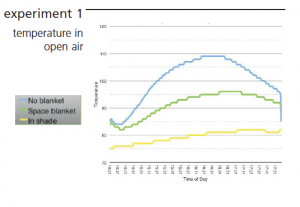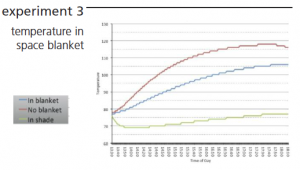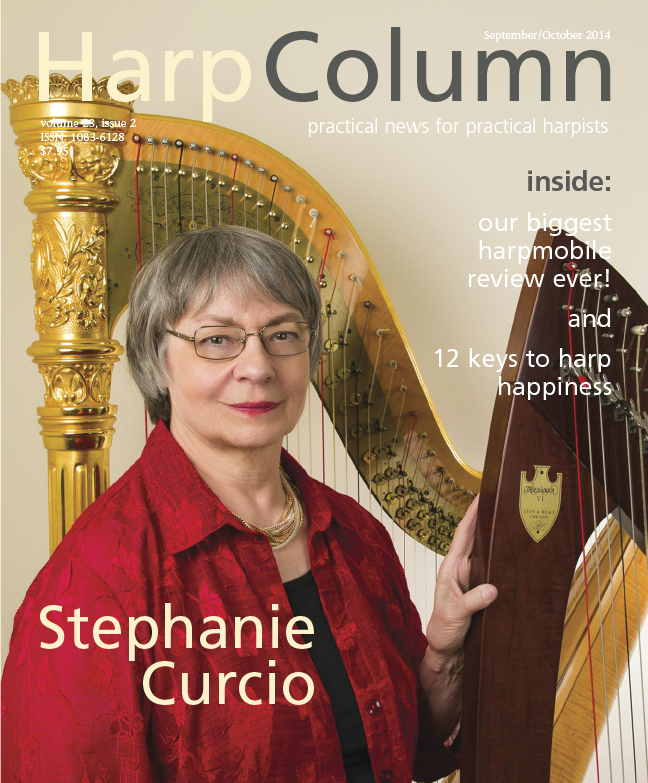How to keep your harp cool in your car.
Some like it hot, just not your harp. So how hot is too hot for your harp? My rule of thumb is if you are comfortable, your harp is comfortable. Better yet, treat your harp as an older parent or a newborn baby, and, yes, I know they sometimes act the same. Your harp may not be a living breathing person, but its longevity and survival may well depend on the choices you make.
Here are my guidelines for keeping your harp in extreme temperatures (in Fahrenheit):
[pullquote]For years I’ve been asked how to keep a harp safe in a hot car. My response has always been, “Don’t put your harp in a hot car or a cold car; in fact, don’t leave it in your car at all.”[/pullquote]
• maximum temperature: 110 degrees
• maximum temperature variation for a day: 20–30 degrees
• minimum temperature: 50–60 degrees (This is important as you don’t want water condensing on the harp if the temperature reaches dew point.)
Why these numbers? Heat and water vapors are enemies of the glue joints of your harp. Since your harp is under constant strain due to string pressure, and to a lesser extent gravity, you might want to help your harp stay glued together.
For years I’ve been asked how to keep a harp safe in a hot car. My response has always been, “Don’t put your harp in a hot car or a cold car; in fact, don’t leave it in a car at all.” Harps hate change. You may have an Obama sticker on your car but your harp is a conservative.
[protection_text]
One of the harp transport tools I’m always asked about is the space blanket. Would one of these lightweight Mylar blankets save your harp from damage from extreme temperatures?
While space blankets stop radiant heat or the effects of direct sunlight, they do little to stop ambient heat or the temperature of the air surrounding your harp. I even wonder if the space blanket that reflects radiant heat might reflect the heat onto internal parts of your car and thus raise the ambient temperature, but this is beyond the scope of this article.
Before testing effectiveness of the space blanket, I ran some baseline tests of the temperature loggers by placing three of them in a Honda Element—one in the back in the tinted glass area inside a moving pad, one on the dashboard in the sunlight, and one on the dash in a white box loosely wrapped in a space blanket. The temperature readings maxed out at 111, 170, and 164 degrees respectively.
Next I conducted three simple experiments to see if a space blanket makes a difference and if so how much.
Experiment 1: Space (blanket), the final frontier
Purpose: To see if a space blanket makes a difference in your harp’s temperature when exposed to direct sunlight.
Setup: Two lap harps in cases, placed on a wood pallet in open air (not in a car), but under direct sun with a temperature logger—one harp was wrapped in a space blanket, the other was not. One additional temperature logger, not in a harp case, placed in a vehicle in the shade.
Conclusion: In an open air environment the space blanket helps lower your harp’s temperature. This data should also be useful when arguing with clients about playing a gig in the sun without any shade. As you can see, there is close to a 30-degree difference between shade and sun. If you do go for the shade request, remember the sun is not just overhead, but changes angles throughout the day. Go to www.suncalc.net for help in figuring the sun’s angle for your gig time and location. See if you can get a “no shade, no harp” clause in the contract for that next outdoor job.
Experiment 2: What’s your position?
Purpose: To see if there is a difference in temperature between two harps sitting side by side on the back seat. This difference will then be factored against the next set up where the harp closer to the back seat will be covered with a space blanket.
Setup: Two lap harps with temperature loggers in each case, both in a car with windows closed, plus one logger not in a harp case in a separate vehicle in the shade.
Conclusion: The harp closer to the back seat is roughly 5 degrees cooler, on average, than the harp closer to the front seat. Position matters!
Experiment 3: It’s a wrap
Purpose: To see if a space blanketed harp is cooler than one that is not space blanketed in a car with the windows closed.
Setup: Two lap harps in cases, each with a temperature logger, both placed in a car with windows closed. (Same car as experiment 2.) The harp closer to the back seat is wrapped in a space blanket. The harp closer to the front seat does not have a space blanket. One additional logger, not in a harp case, is placed in a separate vehicle in the shade.
Conclusion and summary: The average difference the space blanket made in a closed up car, factoring in the harp’s position in the car is 7 degrees. The peak difference the space blanket made in a closed up car, factoring in the harp’s position in the car is 9 degrees.
While the space blanket is a fine tool, keep in mind the factor that kept temperatures lowest: shade. Space blankets are great for the multi-purposed wonders they are (think survival kits), but some good old-fashioned shade beats a high-tech space blanket any day. •
San Francisco-based harp technician Mike Lewis started working at a harp factory in Chicago in 1989. In 1996 he started his own business, HarpTech. Contact him with suggestions of topics you’d like to see in Tech Talk at harptech@harptech.com.










